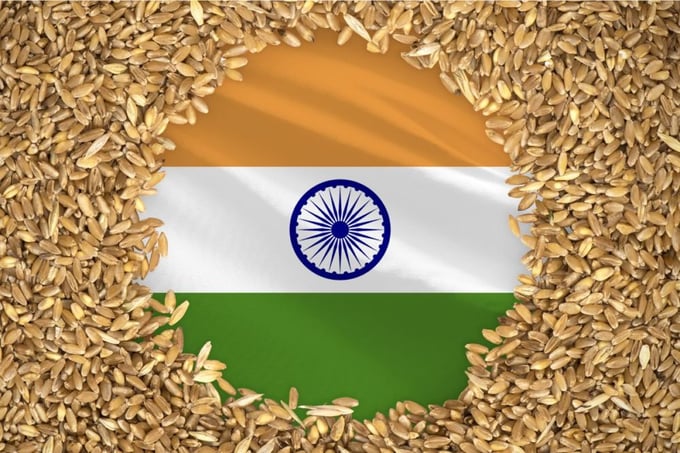November 27, 2025 | 14:21 GMT +7
November 27, 2025 | 14:21 GMT +7
Hotline: 0913.378.918
November 27, 2025 | 14:21 GMT +7
Hotline: 0913.378.918

India, which is the world’s second largest producer of wheat and rice, needs more modern grain storage facilities to reduce post-harvest waste, the government said.
The expansion is part of the Indian government’s $15 billion investment to create an additional 700 lakh tonnes (70 million tonnes) of grain storage capacity over the next five years by constructing thousands of warehouses and bins throughout India. The stated goal is to construct enough grain storage capacity to store 100% of India’s grain production.
The Food Corporation of India (FCI) stores 40 million to 50 million tonnes of rice and wheat as part of the National Food Security Act. India, which recently passed China as the world’s most populous country with 1.4 billion people, currently has storage capacity for only 47% of its total grains output, according to the Indian government.
If successfully implemented, the scheme will decrease the amount of inadequately stored grain, reduce the need for long-distance transportation, lower transportation costs, and improve the efficiency of the supply chain.
India, which is the world’s second largest producer of wheat and rice, needs more modern grain storage facilities to reduce post-harvest waste, the government said. The FCI already completed construction of 1-million-tonne and 2-million-tonne silos and eventually, as part of this grain storage expansion project, plans to build wheat silos at 196 locations across the country.
(WG)

(VAN) China’s cooking oil is suddenly flooding into India. It all comes down to a soybean surplus that Beijing doesn’t quite know what to do with.

(VAN) An Giang promotes supply-demand connections, standardizes quality and builds value chains, creating a foundation for sustainable bird’s nest development and aiming to expand exports.
/2025/11/24/5339-4-nongnghiep-075331.jpg)
(VAN) Recently, the conference on 'Sustainable Fisheries Linkage Chain - Tilapia for Export' took place in Tien Hai commune, Hung Yen province.
/2025/11/21/4309-2-153400_128.jpg)
(VAN) Green and low-emission rice is paving the way for Vietnamese rice to enter high-end markets, marking the beginning of a transformation journey toward greening and elevating the national rice brand.

(VAN) ‘Right to Win’ outlines a national action plan that shapes a new vision for Viet Nam’s agriculture in an era of renewal and global integration.

(VAN) Lam Dong’s farmed sturgeon output this year is expected to reach 2,300 tons, worth VND 450 billion, affirming the brand’s position on the market.

(VAN) A surge in Ukrainian egg exports, largely driven by soaring sales to the UK over the last few years, has notably pushed up egg prices on the domestic market.